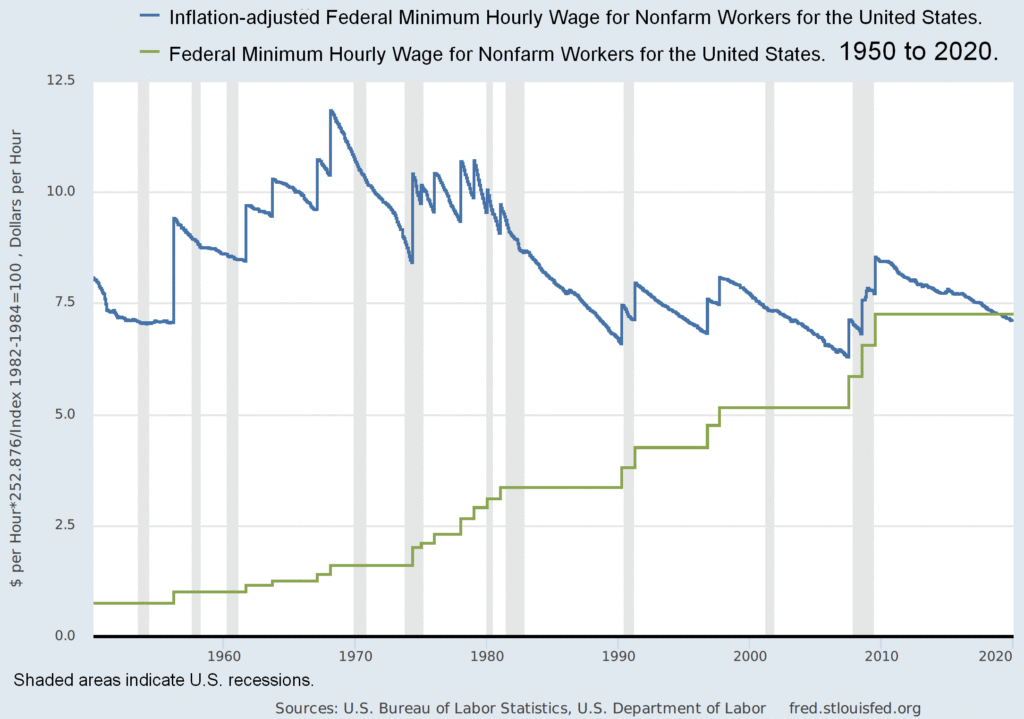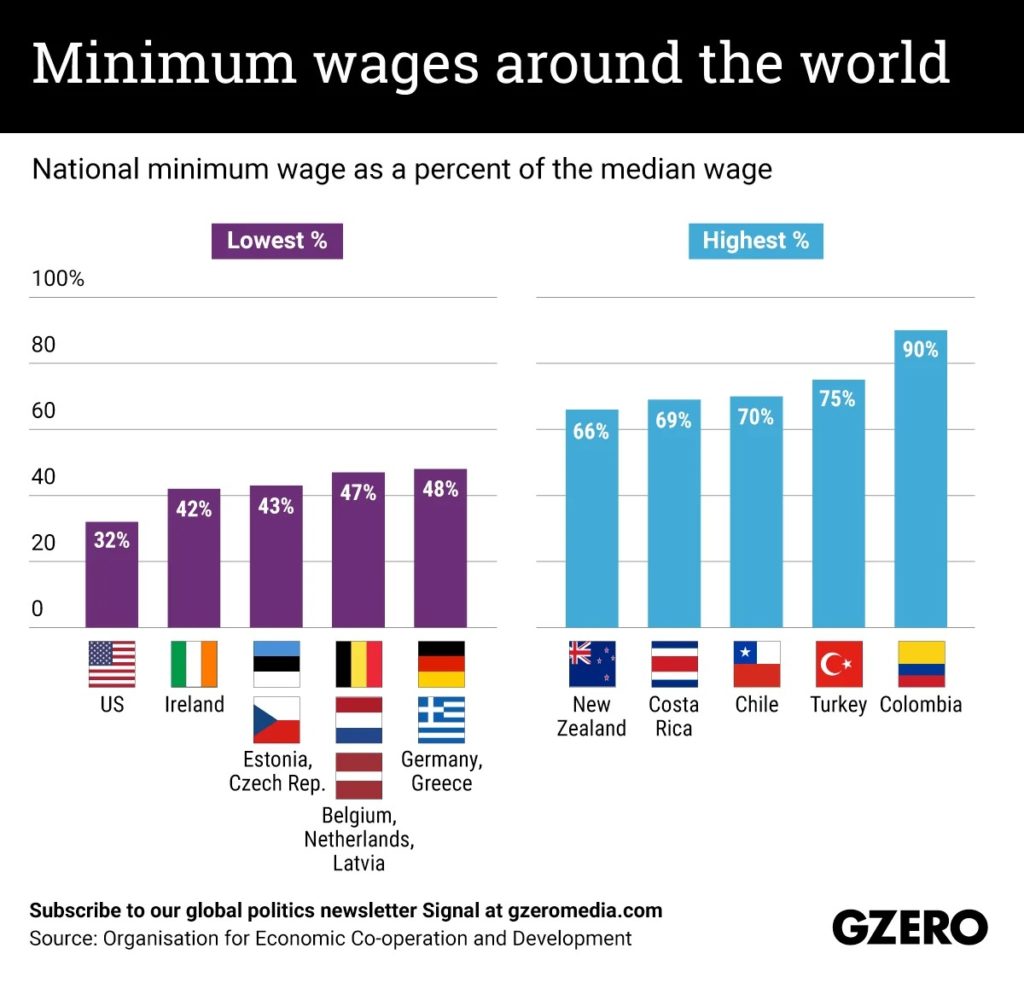Volcanoes are erupting in The Philippines, but on-fire Australia received some welcome rain. The Iran war cries have been called off and The Donald’s military powers are about to be hamstrung by the Senate. Meanwhile, his impeachment trial is starting, and we’re all on Twitter for a front-row seat.
Progress in Five Minutes: The Federal Minimum Wage Push
There’s been a good deal of momentum around the federal minimum wage recently. We explain what it will take to increase the federal minimum wage, which has been stuck at $7.25 since 2009.
There’s been a good deal of momentum around the federal minimum wage recently. And though the increase to $15 from $7.25 an hour didn’t make it into the most recent stimulus package due to budgetary legislation rules, President Joe Biden campaigned on a $15 an hour minimum wage, Vice President Kamala Harris has long-supported the increase, and both Democratic and Republican lawmakers support raising the minimum wage, although they differ on the amount.
How we got here:
Fast food workers in New York City started calling for a $15 an hour minimum wage and the right to unionize back in 2012, and the movement—led by Black and minority workers—spread throughout the US. At the time, doubling hourly wages seemed like an incredible and impossible feat, even though, as the workers and organizers argued, fast food workers were making major companies richer while earning poverty wages. (It’s also important to note that minimum wage workers can’t afford housing anywhere in the US, according to a 2020 report by the National Low Income Housing Corporation.)
Despite the pushback from groups that included restaurant lobbyists, fast food workers prevailed in a number of states. (New York, for example, implemented phased-in increases to the minimum wage. Workers in New York City, Long Island, and Westchester have $15 an hour, and the rest of the state is at $12.50 an hour.) In recent years, more states have moved to increase the minimum wage, including Florida, which will reach $15 an hour by 2026. Right now, 29 states and Washington, D.C. have minimum wages higher than $7.25.
Despite these state increases, the federal minimum wage remains at $7.25 an hour. That rate has stayed the same since 2009, the longest stagnant stretch since the federal minimum wage was introduced. (The federal minimum wage was established when FDR signed the Fair Labor Standards Act of 1938, which also established the 40-hour workweek and cracked down on child labor.) A recent report by the Congressional Budget Office says that $15 an hour would put 0.9 million American workers over the poverty line.

Who wants it:
Vermont Senator Bernie Sanders introduced a bill for a $15 an hour minimum wage in 2015 and called on then-President Obama to sign an executive order to increase the minimum wage. In more recent years, a number of Democrats have called for a $15 an hour minimum wage, and an estimated two-thirds of Americans support the increase.
Who doesn’t:
Economists, including TPN member Tyler Cowen, believe that a doubled federal minimum wage is “too high a wage floor” that will lead to “significant declines in employment opportunities for workers with few skills or little experience.” The recent Congressional Budget Office estimate suggests that 1.4 million would become jobless because of the boosted federal minimum wage, and says that $12 and $10 an hour minimum wages, respectively, would have a lesser impact on jobs. (Economists also disagree on the potential job losses.)
Other bills to keep an eye on:
All the politicians we’ve named so far have been Democrats or independents, and Democrats have historically been the most supportive of minimum wage increases.
Josh Hawley, the Republican senator from Missouri, has introduced the so-called “Blue Collar Bonus” that would raise the minimum wage to $15 by 2021 via tax credits instead of pay, and be funded by taxpayers instead of employers. Like Hawley, another bill introduced by Sens. Tom Cotton and Mitt Romney would require that only US citizens receive the increased wage, which would rise to $10 an hour by 2025.

Around the world: We are very far behind the rest of the globe. Though we’re starting at the bottom, the energy around raising the federal minimum wage right now is very promising.


